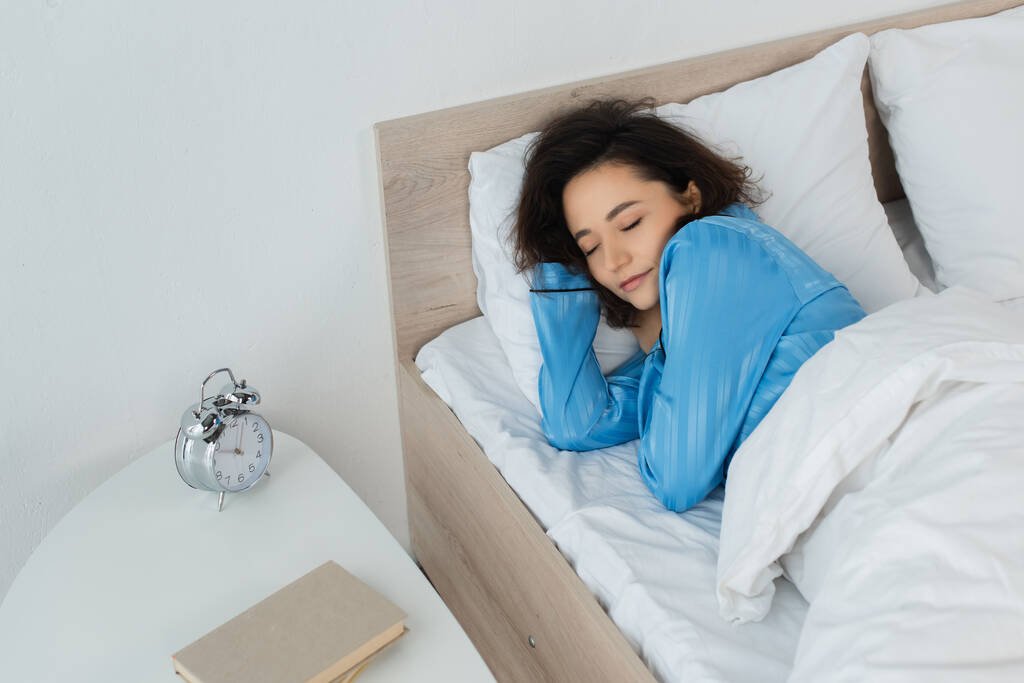Introduction
Getting a good night’s sleep is essential for our overall health and well-being. However, many of us struggle to find the right sleeping position that allows us to wake up feeling rested and refreshed. As someone who has dealt with sleep issues myself, I’ve done extensive research on the best positions for sleeping and how they can impact our quality of sleep. In this article, I’ll share what I’ve learned about the pros and cons of different sleeping positions and provide tips for optimizing your sleep posture for maximum comfort and health benefits.
Why Sleeping Position Matters
Before we dive into the best positions for sleeping, let’s first understand why sleeping position matters in the first place. Our sleeping posture can have a significant impact on various aspects of our health, including:
Spinal Alignment
Maintaining proper spinal alignment while we sleep is crucial for preventing back pain, neck pain, and other musculoskeletal issues. When we sleep in a position that allows our spine to remain in its natural curved shape, we reduce the risk of waking up with aches and pains.
Breathing and Snoring
Certain sleeping positions can exacerbate breathing problems like sleep apnea and snoring. By choosing a position that keeps our airways open and unrestricted, we can breathe more easily and reduce the likelihood of disruptive snoring.
Digestive Health
Our sleeping position can also impact our digestive health. Sleeping on our left side, for example, can help facilitate the movement of food through our digestive tract and reduce the risk of acid reflux and heartburn.
Circulation
Some sleeping positions, particularly those that involve lying on our back or stomach, can put pressure on our circulatory system and restrict blood flow. This can lead to numbness, tingling, or even more serious issues like deep vein thrombosis (DVT).
Now that we understand the importance of sleeping position, let’s explore some of the best positions for sleeping and their potential benefits and drawbacks.
Side Sleeping
Side sleeping is one of the most common and best positions for sleeping, with over 60% of people reporting that they prefer to sleep on their side. There are several variations of side sleeping, each with its own unique benefits and considerations.
Left Side Sleeping
Sleeping on your left side is often considered one of the best positions for sleeping, particularly for pregnant women and those with digestive issues. When you sleep on your left side, gravity helps facilitate the movement of food through your digestive tract, reducing the risk of acid reflux and heartburn. For pregnant women, left side sleeping can also improve circulation to the uterus and reduce pressure on the liver.
Right Side Sleeping
While left side sleeping is generally considered more beneficial, right side sleeping can also be a comfortable and healthy option for many people. Right side sleeping may be particularly helpful for those with certain types of heart disease, as it can reduce pressure on the heart and improve circulation.
Fetal Position
The fetal position involves curling up on your side with your knees drawn up towards your chest. This position can be particularly comforting for those with lower back pain, as it helps to open up the spaces between the vertebrae and reduce pressure on the spine. However, curling up too tightly in the fetal position can restrict breathing and cause stiffness in the neck and shoulders.
Pillow Placement for Side Sleeping
To optimize comfort and spinal alignment while side sleeping, it’s important to use pillows strategically. When sleeping on your side, try placing a pillow between your knees to keep your hips and spine in alignment. You may also want to use a supportive pillow under your head to keep your neck in a neutral position.
Back Sleeping
Sleeping on your back is often considered one of the best positions for sleeping, as it allows your head, neck, and spine to rest in a neutral position. Back sleeping can be particularly beneficial for those with neck or back pain, as it reduces pressure on these areas and promotes proper alignment.
Benefits of Back Sleeping
In addition to promoting spinal alignment, back sleeping has several other potential benefits, including:
- Reducing acid reflux and heartburn by keeping the head elevated above the stomach
- Minimizing facial wrinkles and acne by keeping the face off the pillow
- Preventing breast sagging by allowing the breasts to rest evenly on the chest
Drawbacks of Back Sleeping
While back sleeping can be very comfortable and beneficial for some people, it does have some potential drawbacks, including:
- Increased snoring and sleep apnea risk, particularly for those who are overweight or have enlarged tonsils or adenoids
- Potential for lower back pain, particularly for those with underlying back issues or poor mattress support
- Risk of developing a condition called “supine hypotensive syndrome,” which can cause dizziness, nausea, and other symptoms in some people
Pillow Placement for Back Sleeping
To optimize comfort and support while back sleeping, it’s important to use pillows strategically. When sleeping on your back, try using a supportive pillow under your head and neck to maintain neutral alignment. You may also want to place a small pillow or rolled-up towel under your knees to reduce pressure on your lower back.
Stomach Sleeping
Stomach sleeping is often considered the least healthy of all the best positions for sleeping, as it can put significant strain on the neck and back. However, for some people, stomach sleeping is the only position that feels comfortable and allows them to fall asleep easily.
Drawbacks of Stomach Sleeping
Stomach sleeping has several potential drawbacks, including:
- Increased risk of neck and back pain due to the unnatural twisting of the neck and spine
- Potential for numbness and tingling in the arms and hands due to restricted circulation
- Increased risk of facial wrinkles and acne due to constant pressure on the face
- Difficulty breathing deeply due to the weight of the body on the lungs
Modifications for Stomach Sleeping
If you find that stomach sleeping is the only position that works for you, there are some modifications you can make to minimize the potential drawbacks:
- Use a very thin pillow or no pillow at all to keep your neck in a more neutral position
- Place a pillow under your hips to reduce pressure on your lower back
- Try sleeping with one leg bent up towards your chest to reduce twisting in the spine
- Consider using a supportive mattress that allows your body to sink in slightly and reduces pressure points
Finding Your Best Sleeping Position
Ultimately, the best positions for sleeping will vary from person to person based on individual comfort preferences, health concerns, and physical characteristics. To find the sleeping position that works best for you, it may take some trial and error and a willingness to experiment with different positions and pillow placements.
Listen to Your Body
One of the most important things to keep in mind when trying to find your best sleeping position is to listen to your body. If you wake up with aches and pains or feel groggy and unrested, it may be a sign that your current sleeping position isn’t working for you. Pay attention to how your body feels in different positions and make adjustments as needed.
Experiment with Pillows
Pillows can make a big difference in the comfort and support of different sleeping positions. Experiment with different pillow types, shapes, and placements to find what works best for you. Keep in mind that you may need different pillows for different positions – for example, a thicker pillow for side sleeping and a thinner pillow for back sleeping.
Consider Your Mattress
Your mattress can also play a big role in the comfort and support of different sleeping positions. If you find that you’re consistently waking up with aches and pains, it may be time to invest in a new mattress that better suits your needs. Look for a mattress that provides adequate support for your spine while still allowing for some cushioning and pressure relief.
Give It Time
When trying out a new sleeping position, it’s important to give your body time to adjust. It may take a few nights or even a few weeks to get used to a new position, so don’t give up too quickly if it feels uncomfortable at first. Stick with it for at least a week or two before making a final judgment.
Tips for Optimizing Sleep Quality
In addition to finding the best positions for sleeping, there are several other things you can do to optimize your sleep quality and wake up feeling rested and refreshed:
Stick to a Consistent Sleep Schedule
Try to go to bed and wake up at the same time every day, even on weekends. This helps regulate your body’s internal clock and can make it easier to fall asleep and wake up naturally.
Create a Relaxing Bedtime Routine
Develop a relaxing bedtime routine that helps signal to your body that it’s time to wind down and prepare for sleep. This might include taking a warm bath, reading a book, or practicing some gentle stretching or yoga.
Keep Your Sleep Environment Cool, Dark, and Quiet
Create a sleep environment that is conducive to rest and relaxation. Keep your bedroom cool (around 60-67 degrees Fahrenheit), dark (use blackout curtains or an eye mask if needed), and quiet (use a white noise machine or earplugs if necessary).
Limit Screen Time Before Bed
The blue light emitted by electronic devices like smartphones, tablets, and computers can interfere with your body’s natural sleep-wake cycle. Try to limit your screen time for at least an hour before bed, or use blue light blocking glasses or apps to minimize the impact.
Get Regular Exercise
Regular physical activity can help improve the quality and duration of your sleep. Aim for at least 30 minutes of moderate exercise most days of the week, but try to avoid vigorous exercise too close to bedtime as it may make it harder to fall asleep.
Conclusion
Finding the best positions for sleeping is an important step in optimizing your sleep quality and waking up feeling rested and refreshed. While side sleeping and back sleeping are generally considered the healthiest options, the best sleeping position for you will depend on your individual needs and preferences. By experimenting with different positions and pillow placements, creating a relaxing sleep environment, and adopting healthy sleep habits, you can improve the quality and duration of your sleep and wake up feeling your best every day. Remember, investing in your sleep is investing in your overall health and well-being, so don’t hesitate to make it a top priority in your life.
Naxes Adam (Retreats)
Naxes Adam, expert in Retreats and fitness at thotslife.com, where his holistic approach fosters physical and mental well-being. Through carefully curated retreat experiences and personalized fitness programs, Naxes empowers individuals to achieve their health goals and find inner balance.

